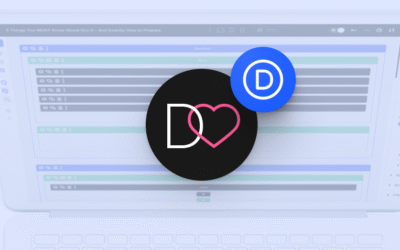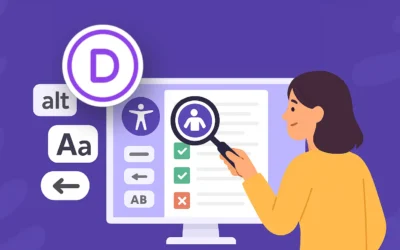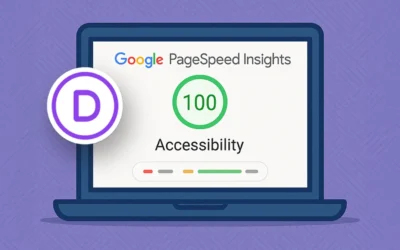Finding Your Perfect Pricing Strategy
Let’s face it – figuring out how to price your web design services can feel like trying to hit a moving target while blindfolded. Should you bill by the hour or create neat little packages with fixed prices? I’ve been on both sides of this fence, and trust me, there’s no one-size-fits-all answer. But with a little strategy, you can find the approach that works best for you and your clients.
The Great Pricing Debate: Hourly vs. Fixed
Before we dive in, take a moment to consider: How do you feel when you hire someone with an open-ended hourly rate versus a clear package price? Your clients are thinking about this too!
Hourly Pricing: Pros and Cons
✅ Transparency & Fair Compensation – You get paid for every hour worked, ensuring you’re compensated for revisions and unexpected scope changes.
✅ Flexibility – Works well for open-ended projects where the scope isn’t clearly defined.
✅ Easy to Scale – As your skills improve, you can increase your hourly rate and earn more without taking on extra work.
❌ Unpredictable Costs for Clients – Clients may hesitate to commit if they don’t have a clear idea of the final cost.
❌ Efficiency Isn’t Always Rewarded – If you work faster due to experience, you might end up making less money compared to a fixed-price model.
❌ Tracking Time is a Hassle – Requires diligent time tracking and reporting, which can add extra admin work.
Fixed-Price Packages: Pros and Cons
✅ Clear Expectations – Clients know exactly what they’ll pay, which helps build trust and speeds up the sales process.
✅ Higher Profit Margins – If you estimate your time well and work efficiently, you can increase profitability.
✅ Less Admin Work – No need for time tracking, making it easier to manage projects
❌ Scope Creep is a Risk – Clients may request extra revisions or additional features without extra payment.
❌ Challenging to Price Correctly – If you underestimate the time needed, you might end up making less than your hourly rate.
❌ Not Ideal for Open-Ended Projects – Works best for well-defined projects with clear deliverables.
Reflective Question:
Which model aligns better with how you prefer to work? Do you enjoy the certainty of fixed prices or the flexibility of hourly billing?
The Hybrid Approach: Best of Both Worlds
Here’s a little secret from my 15+ years of running a web design business: you don’t have to choose one or the other! Many successful designers (myself included) use a hybrid approach:
✅ Fixed pricing for standard services (e.g., “Basic 5-Page Website Package: $2,500”)
✅ Hourly rates for custom features, additional revisions beyond the package limit, or ongoing maintenance
✅ Retainer pricing for clients who need regular updates or support (e.g., “10 hours per month at a discounted rate of $100/hour”)
This approach gives clients the predictability they crave while protecting you from scope creep monsters and never-ending revision cycles.
Display Pricing on Your Website: Yes, No, or Maybe?
This is a hot debate in the web design world. Here are three approaches:
1️⃣ Full Transparency
Display complete pricing information for all packages and services.
Works well for: Designers targeting small businesses with straightforward needs and modest budgets.
2️⃣ “Starting At” Pricing
Show base prices but make it clear that final quotes depend on specific requirements.
Works well for: Mid-range designers with semi-customizable packages.
3️⃣ Contact for Quote
No specific pricing information, just a call to action to request a custom quote.
Works well for: High-end designers working on complex, custom projects.
Reflective Question:
What would your ideal client prefer to see in terms of pricing transparency?
FAQ: Web Design Pricing Questions
What’s the average hourly rate for web designers?
Entry-level designers typically charge $25-50/hour, mid-level designers $50-100/hour, and experienced designers $100-150+/hour. Rates vary widely based on location, specialization, and demand.
How do I know if I’m undercharging?
If you’re constantly swamped with work, you never lose clients over price, or you feel resentful about projects, those are strong signs you’re undercharging. Time to raise those rates!
Should I charge a deposit before starting work?
Absolutely! A 50% deposit before starting work is standard industry practice. For larger projects, you might split payments into 30% upfront, 30% at midpoint, and 40% upon completion.
What should I do if a client keeps requesting changes outside the scope?
This is where your contract saves you! Politely remind them of the project scope and let them know additional changes will be billed at your hourly rate. Be firm but friendly.
Final Thoughts: Find What Works for YOU
There’s no “correct” pricing model for web design services – the best approach is the one that matches your work style and attracts your ideal clients. Whether you charge hourly, offer fixed-price packages, or mix it up, the key is clarity and confidence in your pricing.
Remember: You’re not just selling hours of work – you’re selling years of experience, problem-solving skills, and the ability to turn a client’s vision into digital reality.
And while we’re on the topic of pricing… I’ve found that offering hourly-based support is one of the most helpful things I can do for fellow Divi web designers. Sure, tutorials are great (and I love creating them!) but nothing compares to solving a specific problem together, one-on-one. That’s why I offer personalized support sessions where we can tackle your trickiest issues, implement custom designs, or troubleshoot, all tailored to your project.
👉 Learn more about my 1-on-1 Divi support services
Now I’d love to hear from you! Do you display pricing on your website? What pricing model works best for your business? Share your experiences in the comments below! 💬




Hi Ania,
Thank you so much for sharing your thoughts and experiences on pricing 🙏 I really appreciate how openly you approached the topic — it’s something so many of us grapple with, and your guide offers both clarity and reassurance.
It’s always inspiring to read your insights, and this one especially gave me something to reflect on.
Thank you again for your generosity in sharing your knowledge! Have a wonderful weekend ☀️
Warm regards,
Rikke
Hi Rikke,
Thank you so much for your kind comment! I’m really glad to hear the article resonated with you 😊
Would love to know how others charge for many small edits over a long time. E.g 30 mins march, 5 in april, do you round up or do you keep adding these together till you get to an hour?
Great question! I usually set a minimum (like 10 minutes) and then keep adding up those small edits until they reach an hour. If it’s a monthly retainer, I let unused time roll over but it needs to be used within the year.
I appreciate your comparisons of the two options. I myself use an hourly rate for one-off jobs, fixed rates for maintenance and social media management, and page count rates for building websites. My contracts spell out those services and additional fees if more is requested.
Thank you so much for sharing! I love how you’ve combined different pricing models for different types of work – that’s such a smart approach. And having everything clearly outlined in your contracts is key (scope creep is real! 😅). Sounds like you’ve got a great system in place!